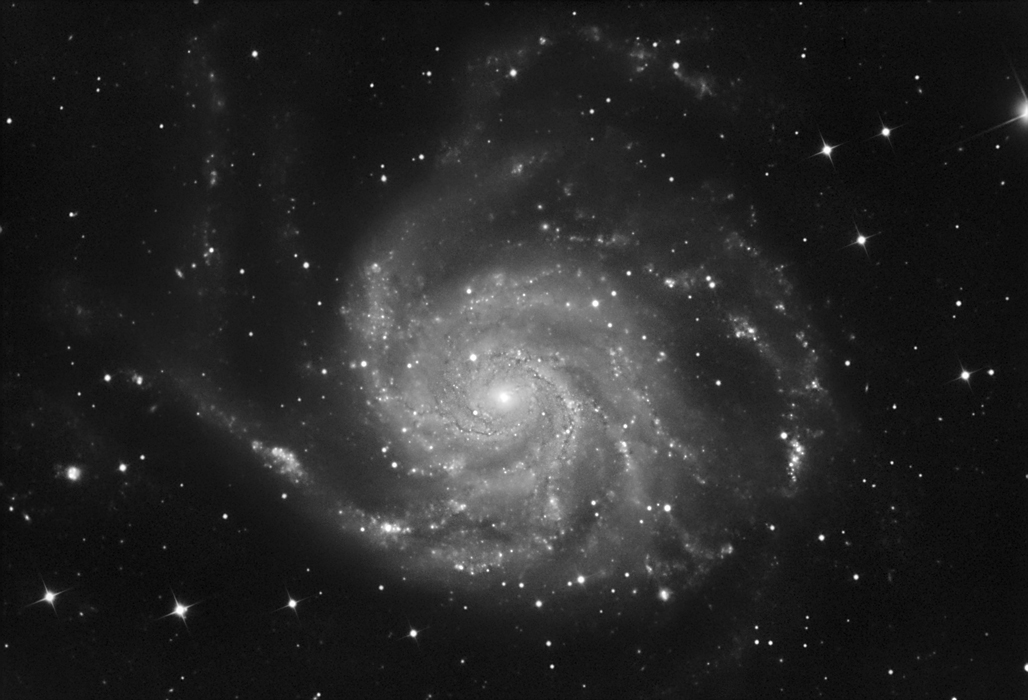Messier 101 (Pinwheel Galaxy)
Characteristics:
Magnitude: Approximately 8.5
FOV: Approximately 19' x 28'
Distance: 27 million light years
RA (J2000): 14h 3m 10s
Dec (J2000): 54 degrees 21' 45"
Position Angle (Pinpoint): plus 24 degrees
Description:
M101 is a large, beautiful spiral galaxy in Ursa Major. The
above image is a work in progress- it is not "perfect" yet and will be
followed by a color version as soon as possible, but we are having a
very rainy springtime. This is a fairly deep, 4.3 hour exposure
taken under moonless skies with the U32 and VC200L. I am pleased
with the detail revealed in this image after Lucy-Richardson
deconvolution (resampled x 2, AIP4WIN, LR in Fast mode, PSF using about
20 stars, 20 iterations, relaxation parameter at 0.5, process high
frequency components only, resample x 0.5). I have tried a
variety of deconvolution algorithms at this point and have settled on
AIP4WIN's, since I feel that it gives the best results. Check
out the full scale image to see the detail present in this FOV,
captured at a focal length of 1800 mm and aperture of only 8". I
am very pleased with this image since it shows that my collimation is
excellent, and also shows that this very lightweight scope and camera
combination has the potential that I had hoped for. For
visual observation, M101 is best seen using a low power eyepiece under
dark skies. Despite being relatively bright at magnitude 8.5, it
has low surface brightest due to its large size. There are many
smaller, faint galaxies in this FOV. More information about M101
may be found here.
Photographic
Details:
Date: April 30, 2008
Scope: Vixen VC200L at f9 (FL = 1800 mm) on the
Takahashi NJP
Mount.
Autoguider: SBIG ST-402 with
Sky90 at f4.5.
Camera: Apogee U32 -20C.
Filters: Astronomik
Clear (unblocked) filter.
Exposures: 26 x 10' Total
exposure 4.3 hours.
Conditions: Transparency good; seeing (FWHM)
approximately 3"; Temperature dropped to approximately 34 degrees
F during the night.
Post-processing:
Calibrated, aligned, and Sigma Clip combined
in Maxim. DDP
in ImagesPlus (IP). Deconvolution in AIP4WIN as described above.
Further processing in Photoshop
CS (16
bit format).
Please
note: Graphics on this website may not be reproduced without
author permission.
Back to Galaxies
Home

